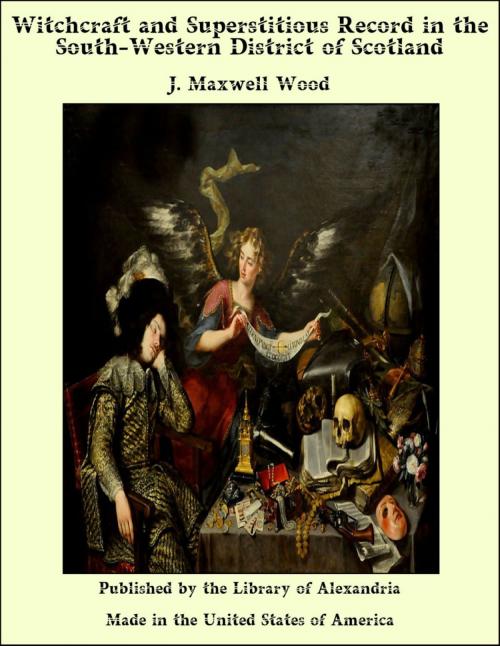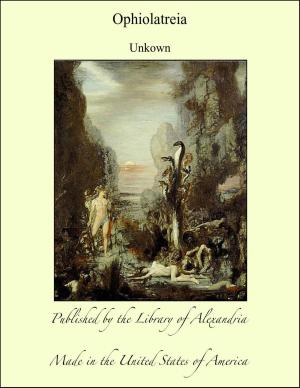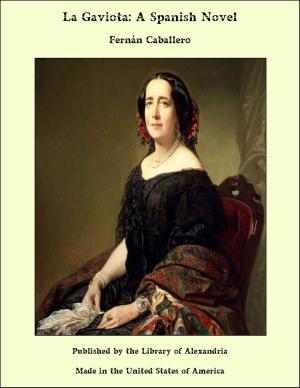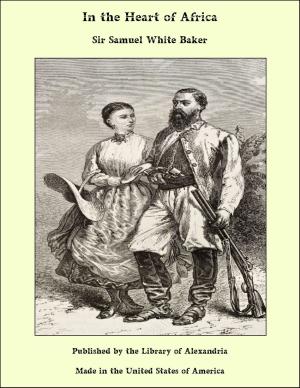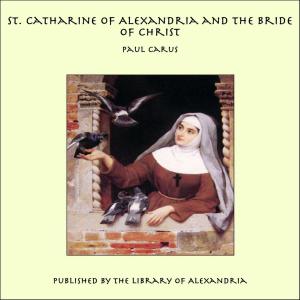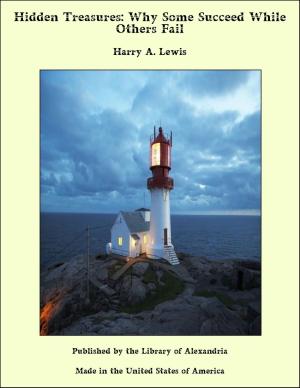Witchcraft and Superstitious Record in the South-Western District of Scotland
Nonfiction, Religion & Spirituality, New Age, History, Fiction & Literature| Author: | J. Maxwell Wood | ISBN: | 9781465588470 |
| Publisher: | Library of Alexandria | Publication: | March 8, 2015 |
| Imprint: | Language: | English |
| Author: | J. Maxwell Wood |
| ISBN: | 9781465588470 |
| Publisher: | Library of Alexandria |
| Publication: | March 8, 2015 |
| Imprint: | |
| Language: | English |
Throughout Dumfriesshire and Galloway remnants of old-world customs still linger, suggesting a remoter time, when superstitious practice and belief held all-important sway in the daily round and task of the people. In gathering together the available material bearing upon such matters, more particularly in the direction of witchcraft, fairy-lore, death warnings, funeral ceremony and ghost story, the author trusts that by recording the results of his gleanings much as they have been received, and without at all attempting to subject them to higher analysis or criticism, a truer aspect and reflection of the influence of superstition upon the social life of those older days, may be all the more adequately presented. In the far-off days, when Superstition, in close association with the “evil sister” of Ignorance, walked abroad in the land, the south-western district of Scotland shared very largely in the beliefs and terrors embraced under the general descriptive term of witchcraft. Active interference in the routine of daily life on the part of the Prince of Darkness and his agencies was fully believed in. The midnight ride, the power of conversion into animal semblance and form, mystic rite and incantation, spells and cantrips, as well as the presence on earth of the Devil himself, who generally appeared in some alluring form—all had a firmly-established place in the superstitious and impressionable minds of the people who dwelt in the land of those darker days. In approaching the whole matter for descriptive purposes, the traditional, or as it may perhaps be fittingly termed, the “ideal” form of witchcraft, falls naturally first to be considered, and here the existence of a secret society or unholy order of witches and warlocks meeting together at certain appointed times, figures as an outstanding feature, qualification to belong to which, confessed rare powers of affinity with the powers of evil and darkness. The more these witches and warlocks were feared in their ordinary guise as human mortals by the country-side or district to which they belonged, the higher the rank accorded to them in secret conclave, and the special notoriety of having been branded or “scored,” at the hands of an angry populace, with the sign of the cross on the forehead, carried with it special recognition of itself. Reputed gatherings or witch-festivals were celebrated periodically, the most important and outstanding taking place at Hallowmass, and such eerie places of meeting as the lonely ruins of Sweetheart Abbey and Caerlaverock Castle, were the appropriate scenes of their midnight rites and revels; but most of all in this south-western district was it to the rising slope of Locharbriggs Hill, not many miles from Dumfries, that the “hellish legion” repaired.
Throughout Dumfriesshire and Galloway remnants of old-world customs still linger, suggesting a remoter time, when superstitious practice and belief held all-important sway in the daily round and task of the people. In gathering together the available material bearing upon such matters, more particularly in the direction of witchcraft, fairy-lore, death warnings, funeral ceremony and ghost story, the author trusts that by recording the results of his gleanings much as they have been received, and without at all attempting to subject them to higher analysis or criticism, a truer aspect and reflection of the influence of superstition upon the social life of those older days, may be all the more adequately presented. In the far-off days, when Superstition, in close association with the “evil sister” of Ignorance, walked abroad in the land, the south-western district of Scotland shared very largely in the beliefs and terrors embraced under the general descriptive term of witchcraft. Active interference in the routine of daily life on the part of the Prince of Darkness and his agencies was fully believed in. The midnight ride, the power of conversion into animal semblance and form, mystic rite and incantation, spells and cantrips, as well as the presence on earth of the Devil himself, who generally appeared in some alluring form—all had a firmly-established place in the superstitious and impressionable minds of the people who dwelt in the land of those darker days. In approaching the whole matter for descriptive purposes, the traditional, or as it may perhaps be fittingly termed, the “ideal” form of witchcraft, falls naturally first to be considered, and here the existence of a secret society or unholy order of witches and warlocks meeting together at certain appointed times, figures as an outstanding feature, qualification to belong to which, confessed rare powers of affinity with the powers of evil and darkness. The more these witches and warlocks were feared in their ordinary guise as human mortals by the country-side or district to which they belonged, the higher the rank accorded to them in secret conclave, and the special notoriety of having been branded or “scored,” at the hands of an angry populace, with the sign of the cross on the forehead, carried with it special recognition of itself. Reputed gatherings or witch-festivals were celebrated periodically, the most important and outstanding taking place at Hallowmass, and such eerie places of meeting as the lonely ruins of Sweetheart Abbey and Caerlaverock Castle, were the appropriate scenes of their midnight rites and revels; but most of all in this south-western district was it to the rising slope of Locharbriggs Hill, not many miles from Dumfries, that the “hellish legion” repaired.
